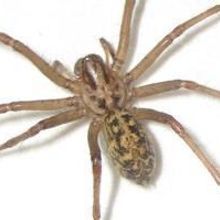Login
Subscribestructural biology, evolution

Week in Review: September 5–9
Jef Akst | Sep 8, 2016 | 2 min read
Environmental magnetite in the human brain; prion structure takes shape; watching E. coli evolve in real time; learning from others’ behavior

Spider and Centipede Venom Remarkably Similar
Bob Grant | Jun 12, 2015 | 2 min read
The predatory toxins employed by animals separated by millions of years of evolution are virtually identical, a study shows.

Color from Structure
Cristina Luiggi | Feb 1, 2013 | 10+ min read
Researchers are working to understand how often-colorless biological nanostructures give rise to some of the most spectacular technicolor displays in nature.

Photonic Colored Creatures
Cristina Luiggi | Jan 31, 2013 | 1 min read
Animals and plants come in a dizzying array of colors. Current research is cracking into the remarkable structures behind nature's artistic display.
